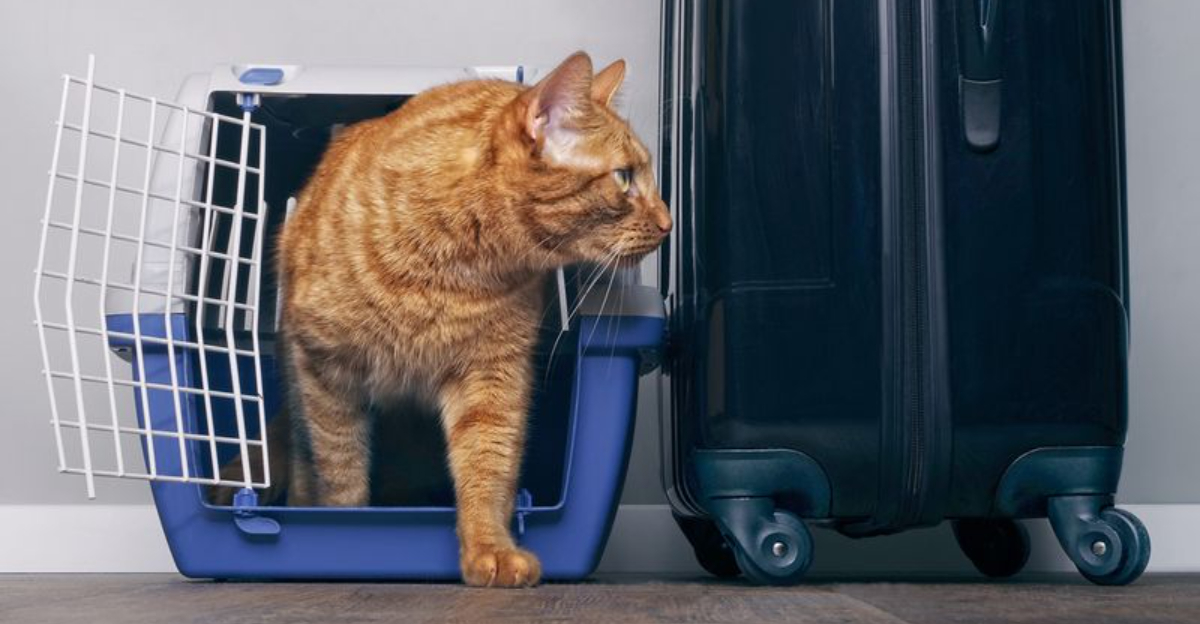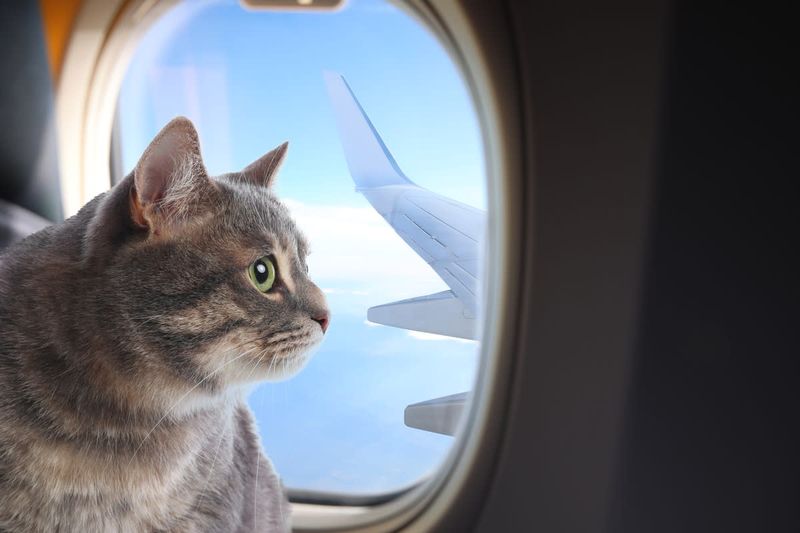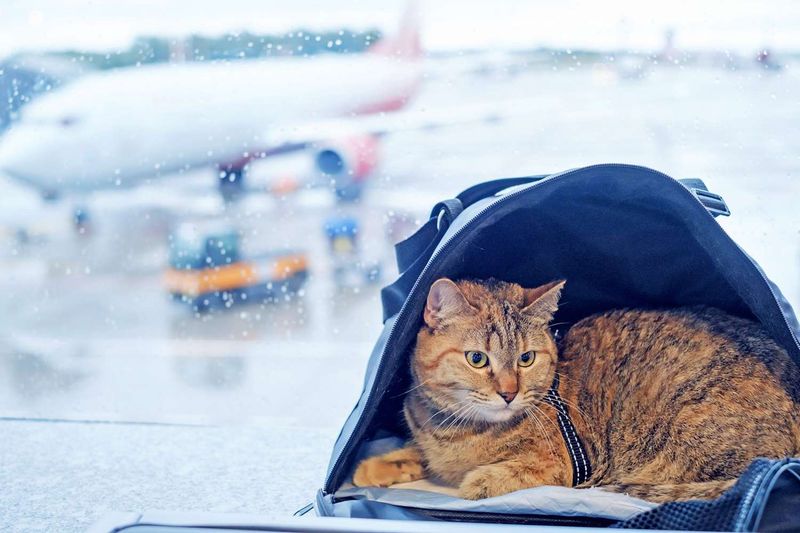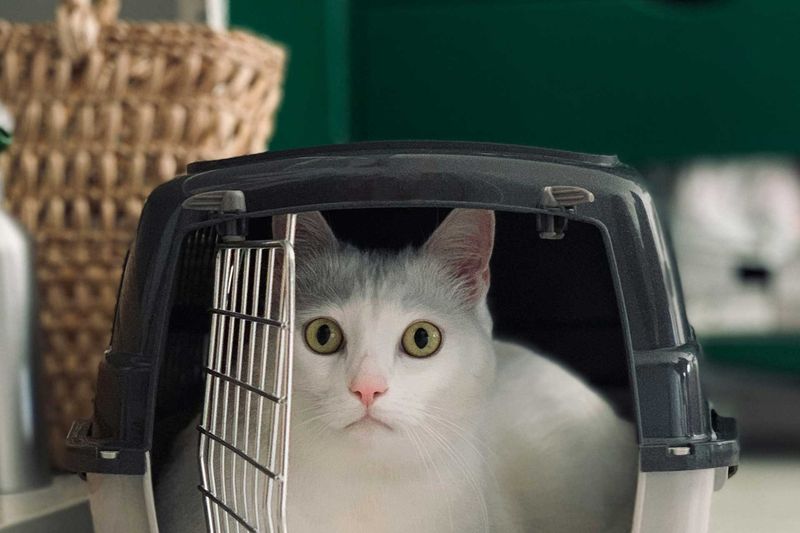📖 Table of Content:
Flying with your cat can be a nerve-wracking experience, both for you and your feline companion. Whether you’re relocating, vacationing, or simply bringing your pet along for an extended visit, deciding where your cat should travel—in the passenger cabin or the cargo hold—requires thoughtful consideration. Safety, comfort, logistics, and airline policies all factor into making the best choice for your cat’s well-being.
Each travel option has its set of advantages and drawbacks, and not all cats (or their humans) are suited for every situation. Cats are sensitive creatures, and the stress of flying can significantly impact their behavior and health. By understanding how the cabin and cargo options differ in terms of environment, restrictions, and safety, you can make a more informed and compassionate decision.
This guide will walk you through the seven most important factors to consider when deciding how your cat should fly. From your pet’s size and breed to the type of flight and the costs involved, we’ll help you weigh the pros and cons clearly. While some owners instinctively want their cats close during the flight, others may find that cargo travel is more practical or even necessary. Regardless of your starting point, by the end of this article, you’ll have a clearer sense of which choice aligns best with your cat’s needs and your travel goals.
1. Comfort and Familiarity
Cats thrive in environments that feel familiar, so placing them in the cabin, where they can see and hear you, often brings a sense of calm. On the other hand, the cargo hold is loud, full of vibrations, and isolated from human contact, which can trigger stress or fear. Even the gentle hum of the plane is less comforting when your pet is alone in a dark, strange compartment. Cabin travel allows your cat to remain in a soft-sided carrier, usually tucked beneath the seat in front of you. This proximity can reassure your pet, especially if you’ve trained it to feel safe in its carrier beforehand. Conversely, in cargo, pets are handled by ground crew and separated from their owners for extended periods, which may be disorienting. Overall, the cabin provides a more consistent and familiar sensory experience for your cat.
2. Safety
Nothing matters more to pet owners than their cat’s safety, and cabin travel offers the most direct way to monitor your pet throughout the journey. Mishaps in the cargo hold—such as delays in loading or unloading, extreme temperatures, or poor ventilation—are rare but do happen. While reputable airlines follow strict pet-handling protocols, cabin travel eliminates much of the uncertainty. Should your cat exhibit distress or signs of illness mid-flight, you’ll be able to react swiftly if it’s nearby. In contrast, cargo-traveling cats are inaccessible during the flight, which delays intervention in the event of problems. It’s also worth noting that not all planes have climate-controlled cargo areas, increasing the risk for heatstroke or hypothermia. Flying in the cabin minimizes such hazards and allows for greater peace of mind.
3. Size and Airline Rules
Airline policies play a decisive role in determining where your cat can travel, often leaving little room for personal preference. Cabin travel is generally restricted to small cats who fit comfortably in an airline-approved under-seat carrier. If your cat is especially large, or if your carrier exceeds size restrictions, cargo may be the only option available. Breed can also influence eligibility—some airlines ban certain cats from cabin travel due to health risks. Not all aircraft are equipped to carry pets in cargo, though, which may limit your flight choices. While cabin travel might sound ideal, the rules governing it can be strict and inconsistent across carriers. Knowing your airline’s pet policy in advance will help avoid last-minute surprises at check-in.
4. Health and Breed Considerations
Specific breeds and health conditions can make one option clearly safer than the other. Flat-faced breeds like Persians or Himalayans often have compromised respiratory systems that make cargo travel especially dangerous. Senior cats, kittens, or those with medical conditions usually fare better in the cabin, where temperature and pressure are stable. Some airlines outright ban at-risk breeds from flying in cargo because of increased mortality rates. Cats with a calm temperament and no known health problems may tolerate cargo better, though this still depends on the airline’s setup. Always consult your veterinarian before booking travel, as they can help assess whether your cat is healthy enough to fly—and in what conditions. A tailored health plan will ensure your pet’s safety and comfort regardless of where they fly.
5. Cost
Flying a cat isn’t free, and the cost can influence your decision more than you’d expect. Airlines charge extra for cabin pets—sometimes as much as a passenger seat on budget airlines—and space is limited. The cargo option, while also fee-based, may be more cost-effective if you’re transporting multiple animals or flying internationally. Cabin travel also often counts your pet carrier as your personal item, reducing what else you can bring on board. Depending on your flight duration and carrier, total pet travel costs can add hundreds to your trip. For some, this is well worth the price of keeping their pet close; for others, cargo becomes a more reasonable solution. Just make sure to account for every fee, including carrier certifications or health checks, in your travel budget.
6. Regulations and Documentation
Rules and paperwork vary not only by airline but also by destination, and that can complicate your planning. International flights often require health certificates, vaccination records, and microchip identification, especially for cargo transport. Cabin travel tends to have fewer requirements, though this is not always the case. Regulations may also dictate quarantine on arrival, particularly if you’re entering countries with strict animal import laws. Be prepared to submit documentation well in advance—some airlines require forms 10–30 days prior to departure. Failing to provide the correct documents can result in your cat being denied boarding or held at customs. A thorough review of airline and destination requirements is essential to avoid logistical headaches.
7. Duration and Type of Flight
Length and complexity of travel are crucial in determining the right flying method for your pet. Cabin travel is generally more feasible for short domestic trips, where your cat can remain calm and undisturbed in its carrier for a few hours. For long-haul or multi-leg flights, however, the cargo hold may be the only viable option, especially when layovers exceed cabin pet time limits. Some cats become restless or anxious in confined spaces for extended periods, making cargo a more tolerable experience—ironically, because they’re less stimulated. That said, each leg of cargo travel adds complexity and risk, so direct flights are preferable. Your cat’s behavior, temperament, and prior travel experience will shape how it handles time in transit. Evaluate both logistics and your cat’s stress tolerance before deciding.







